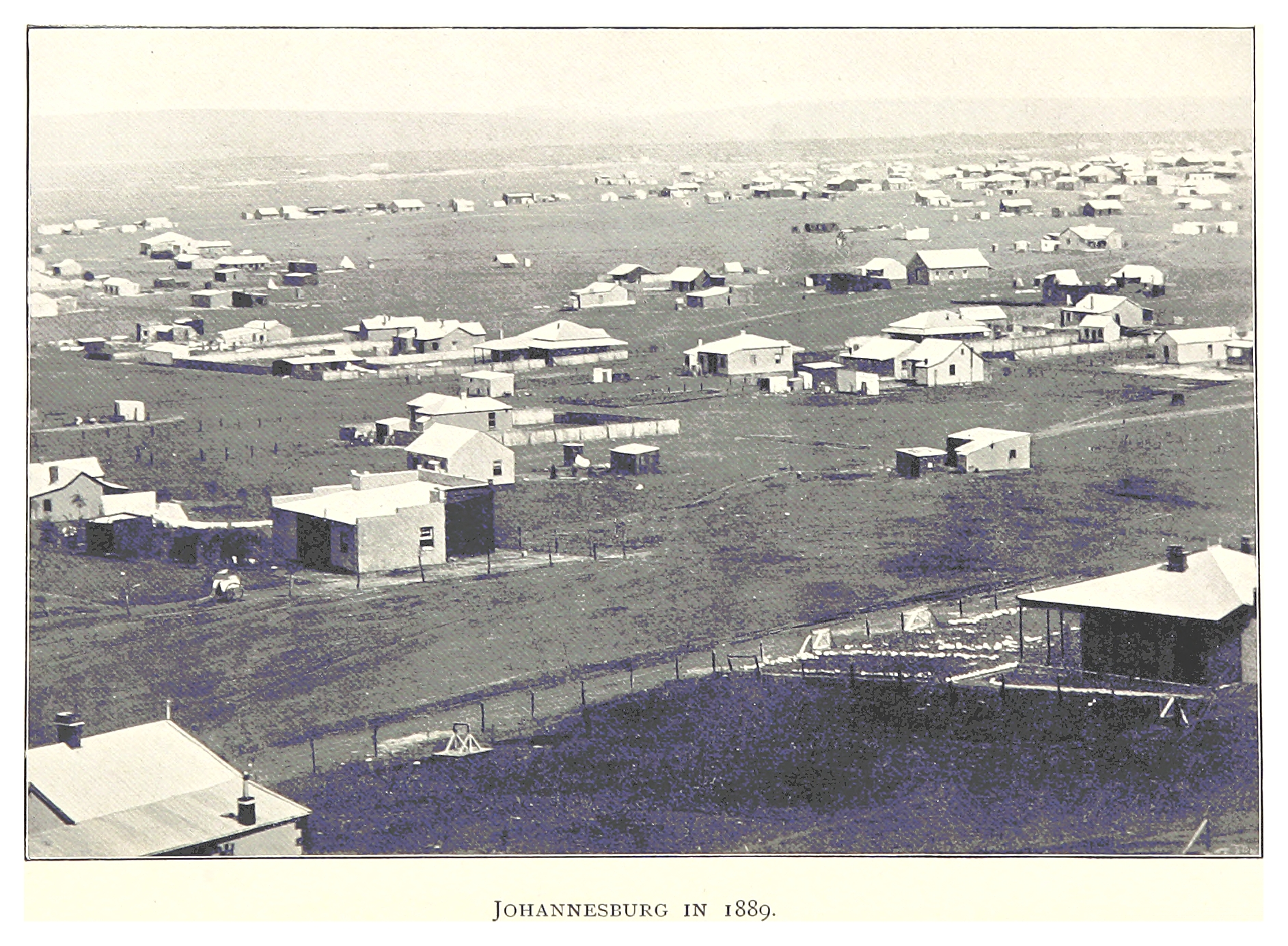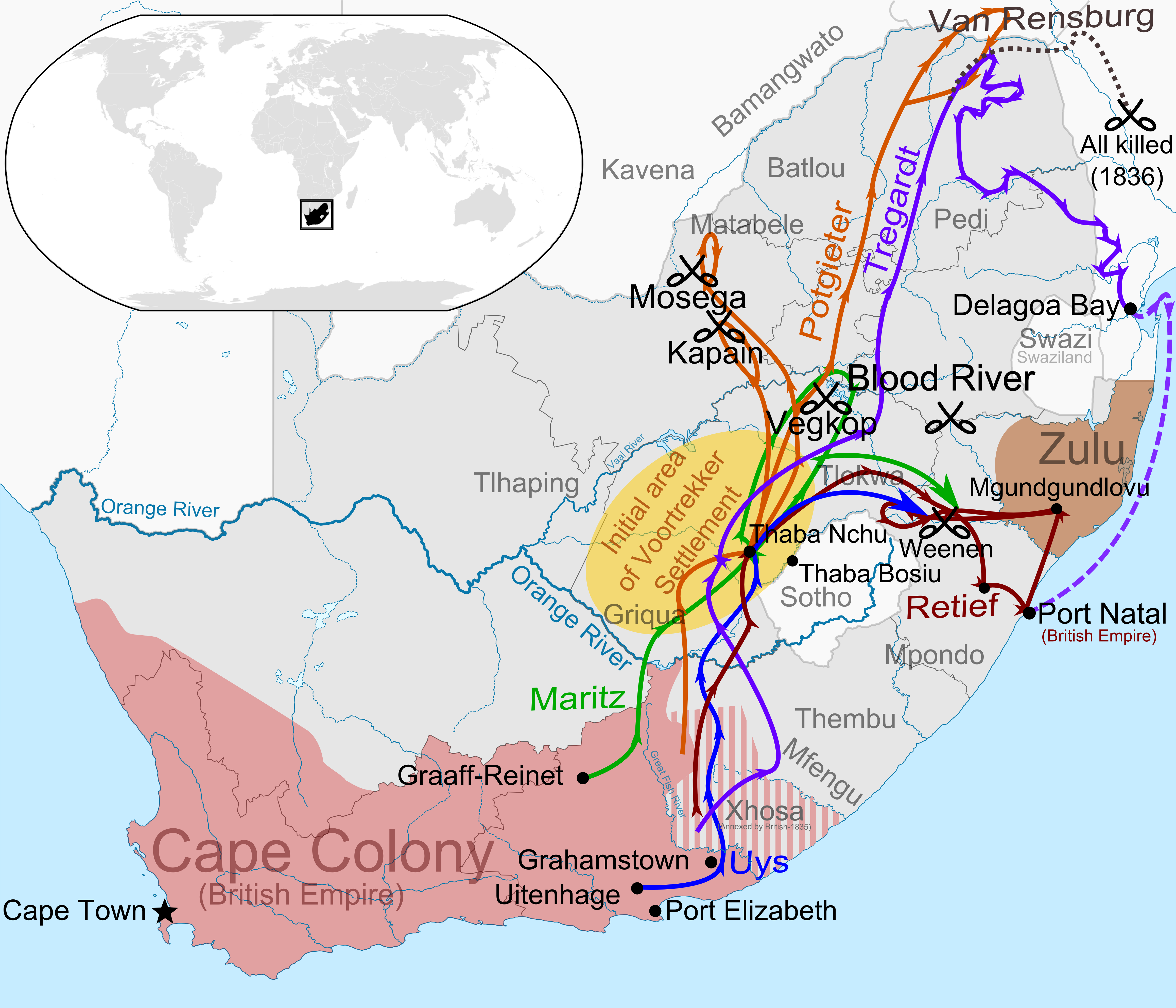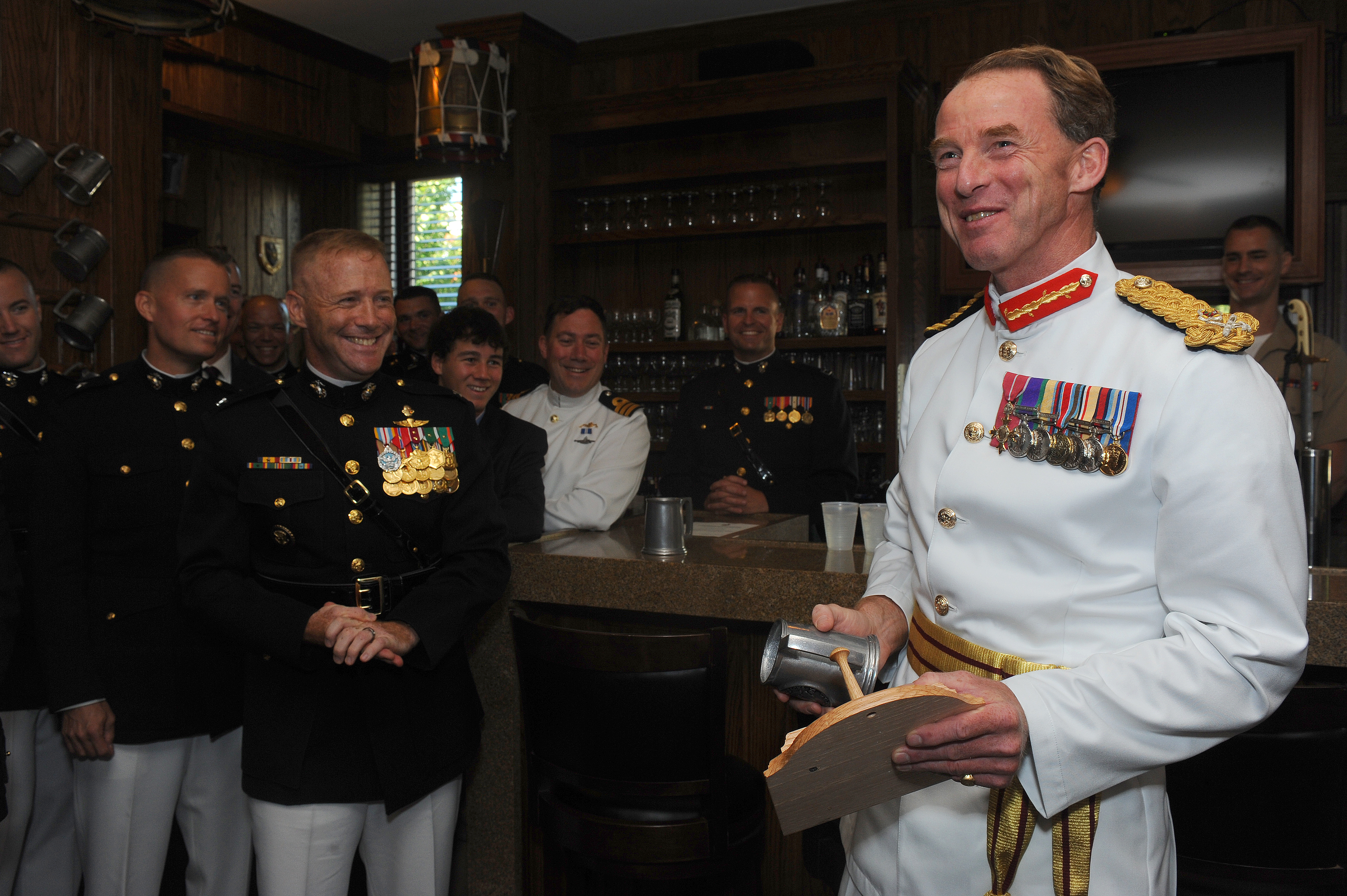|
Second Battle Of Colenso
The Second Battle of Colenso, also known as the Battle of Colenso, was the third and final battle fought during the Black Week of the Second Boer War. It was fought between British and Boer forces from the independent South African Republic and Orange Free State in and around Colenso, Natal, South Africa on 15 December 1899. Inadequate preparation, lack of reconnaissance and uninspired leadership led to a British defeat. Background Shortly before the outbreak of the war, General Sir Redvers Buller VC was dispatched to South Africa at the head of an army corps, and appointed Commander-in-Chief of British Forces in South Africa. On arrival, he found British garrisons besieged on widely separated fronts, with limited communications between the fronts. Having detached forces under Generals Lord Methuen and Gatacre to the western and central fronts, Buller assumed command of his largest detachment and proposed to lead it to the relief of a besieged British force in Ladysmit ... [...More Info...] [...Related Items...] OR: [Wikipedia] [Google] [Baidu] |
Second Boer War
The Second Boer War (, , 11 October 189931 May 1902), also known as the Boer War, Transvaal War, Anglo–Boer War, or South African War, was a conflict fought between the British Empire and the two Boer republics (the South African Republic and Orange Free State) over Britain's influence in Southern Africa. The Witwatersrand Gold Rush caused a large influx of "Uitlander, foreigners" (''Uitlanders'') to the South African Republic (SAR), mostly British from the Cape Colony. As they, for fear of a hostile takeover of the SAR, were permitted to vote only after 14 years of residence, they protested to the British authorities in the Cape. Negotiations failed at the botched Bloemfontein Conference in June 1899. The conflict broke out in October after the British government decided to send 10,000 troops to South Africa. With a delay, this provoked a Boer and British ultimatum, and subsequent Boer Irregular military, irregulars and militia attacks on British colonial settlements in Natal ... [...More Info...] [...Related Items...] OR: [Wikipedia] [Google] [Baidu] |
Ladysmith, KwaZulu-Natal
uMnambithi (formerly Ladysmith until 2024) is a town in the Uthukela District of KwaZulu-Natal, South Africa. It lies north-west of Durban and south-east of Johannesburg. Important industries in the area include food processing, textiles, and tyre production. uMnambithi is the seat for both the Alfred Duma Local Municipality and Uthukela District Municipality. The town was named after Juana María de los Dolores de León Smith, also known as "Lady Smith," the Spanish wife of Sir Harry Smith, the Governor of the Cape Colony from 1847–1852. It held strategic importance during the Second Boer War when, after numerous small skirmishes, it was besieged by Boer forces on 2 November 1899. After three British attempts to relieve the defenders and one Boer attempt to take the town all failed, the siege was eventually broken on 28 February 1900. Both Winston Churchill and Mahatma Gandhi were present at the siege, the former as a war correspondent and the latter as a ... [...More Info...] [...Related Items...] OR: [Wikipedia] [Google] [Baidu] |
Zoutpansberg
Zoutpansberg was the north-eastern division of the Transvaal, South Africa, encompassing an area of 25,654 square miles. The chief towns at the time were Pietersburg and Leydsdorp. It was divided into two districts (west and east) prior to the first general election of the Union of South Africa in 1910. Since 2005 the area is divided into the Capricorn, Vhembe and Mopani district municipalities of Limpopo province. Voortrekkers This was the district to which Louis Tregardt and Hans van Rensburg, the forerunners of the Great Trek, journeyed in 1835. In 1845 Hendrik Potgieter, a prominent leader of the Voortrekkers, moved there. The Zoutpansberg Boers formed a semi-independent community, and in 1857 Stephanus Schoeman, their commandant-general, sided against Marthinus Pretorius and Paul Kruger when they invaded the Orange Free State. South African Republic It was not until 1864 that Zoutpansberg was definitively incorporated in the South African Republic as a result of ... [...More Info...] [...Related Items...] OR: [Wikipedia] [Google] [Baidu] |
Ermelo, Mpumalanga
Ermelo () is the educational, industrial and commercial town of the 7,750 km2 Gert Sibande District Municipality in Mpumalanga province, Republic of South Africa. It is both a mixed agriculture and mining region. It is located 210 km east of Johannesburg. History Some of the earliest inhabitants of the area were the Leghoya people. Not much is known about them, but ruins of their settlements dating back to c.1400 can be found in the area. During the mid-1800s, the area prior to the formation as a village, was an ''outspan'' area for resting teams of draw animals transporting goods across the region mainly due to the water of the small lakes dotting the area. Modern Ermelo was founded by Dutch Reformed Church Reverend Frans Lion Cachet (1835–1899). He would minister to the many farms in the area. A congregation was started by Cachet in 1870, and was recognised by the 5th annual general meeting of the church in April 1872. The town was formed on the farm ''Nooitgedacht'' ... [...More Info...] [...Related Items...] OR: [Wikipedia] [Google] [Baidu] |
Johannesburg
Johannesburg ( , , ; Zulu language, Zulu and Xhosa language, Xhosa: eGoli ) (colloquially known as Jozi, Joburg, Jo'burg or "The City of Gold") is the most populous city in South Africa. With 5,538,596 people in the City of Johannesburg alone and over 14.8 million in the urban agglomeration, it is classified as a Megacity#List of megacities, megacity and List of urban areas by population, one of the 100 largest urban areas in the world. Johannesburg is the provinces of South Africa, provincial capital of Gauteng, the wealthiest province in South Africa, and seat of the country's highest court, the Constitutional Court of South Africa, Constitutional Court. The city is located within the mineral-rich Witwatersrand hills, the epicentre of the international mineral and gold trade. The richest city in Africa by GDP and private wealth, Johannesburg functions as the economic capital of South Africa and is home to the continent's largest stock exchange, the Johannesburg Stock Exchang ... [...More Info...] [...Related Items...] OR: [Wikipedia] [Google] [Baidu] |
Middelburg, Mpumalanga
Middelburg is a large town in the South African province of Mpumalanga. History It was initially established as a halfway station between Lydenburg and Pretoria by the Republic of Lydenburg in 1860. That republic would merge with the South African Republic (ZAR) soon afterwards. The proposed town was established on two farms, ''Klipfontein'' and ''Keerom'' but when the Dutch Reformed Church established a church next door on the farm ''Sterkfontein'', the town would be moved there. It was established as Nasareth, in 1864 by the Voortrekkers on the banks of the Klein Olifants River. It was changed in 1872 Events January * January 12 – Yohannes IV is crowned Emperor of Ethiopia in Axum, the first ruler crowned in that city in over 500 years. *January 20 – The Cavite mutiny was an uprising of Filipino military personnel of Fort S ... to Middelburg to mark its location between the South African Republic, Transvaal capital Pretoria, and the gold mining town of L ... [...More Info...] [...Related Items...] OR: [Wikipedia] [Google] [Baidu] |
Paul Kruger
Stephanus Johannes Paulus Kruger (; 10 October 1825 – 14 July 1904), better known as Paul Kruger, was a South African politician. He was one of the dominant political and military figures in 19th-century South Africa, and State President of the South African Republic (or Transvaal) from 1883 to 1900. Nicknamed , he came to international prominence as the face of the Boer cause—that of the Transvaal and its neighbour the Orange Free State—against Britain during the Second Boer War of 1899–1902. He has been called a personification of Afrikanerdom and admirers venerate him as a tragic folk hero. Born near the eastern edge of the Cape Colony, Kruger took part in the Great Trek as a child during the late 1830s. He had almost no education apart from the Bible. A protégé of the Voortrekker leader Andries Pretorius, he witnessed the signing of the Sand River Convention with Britain in 1852 and over the next decade played a prominent role in the forging of the South ... [...More Info...] [...Related Items...] OR: [Wikipedia] [Google] [Baidu] |
Swaziland
Eswatini, formally the Kingdom of Eswatini, also known by its former official names Swaziland and the Kingdom of Swaziland, is a landlocked country in Southern Africa. It is bordered by South Africa on all sides except the northeast, where it shares a border with Mozambique. At no more than north to south and east to west, Eswatini is one of the smallest countries in Africa; despite this, its climate and topography are diverse, ranging from a cool and mountainous highveld to a hot and dry lowveld. The population is composed primarily of ethnic Swazis. The prevalent language is Swazi (''siSwati'' in native form). The Swazis established their kingdom in the mid-18th century under the leadership of Ngwane III. The country and the Swazi take their names from Mswati II, the 19th-century king under whose rule the country was expanded and unified; its boundaries were drawn up in 1881 in the midst of the Scramble for Africa. After the Second Boer War, the kingdom, under the ... [...More Info...] [...Related Items...] OR: [Wikipedia] [Google] [Baidu] |
Commandant-General
Commandant-general is a military rank in several countries and is generally equivalent to that of major-general. Argentina Commandant general is the highest rank in the Argentine National Gendarmerie, and is held by the national director of the gendarmerie and his senior deputies. Depending on the appointment, it may be equal to any Argentine army rank from brigade general to the highest Argentine army rank, lieutenant general. Ireland During the Irish Civil War of 1922–23, the Irregulars, or anti-Treaty IRA, applied this term to the leaders of their various brigades throughout the country. The term was acquired from the Boer ranks, through veterans of the Irish Transvaal Brigade. Italy In Italy ''Comandante generale'' (commandant general) is the title of the general officers commanding the ''Carabinieri'', the '' Guardia di Finanza'' and the '' Corps of the Port Captaincies – Coast Guard''. It is an appointment, not a rank. In Fascist Italy's Blackshirts, ''comandante g ... [...More Info...] [...Related Items...] OR: [Wikipedia] [Google] [Baidu] |
Piet Joubert
Petrus Jacobus Joubert (20 January 1831 – 28 March 1900), better known as Piet Joubert (''Slim Piet'', Smart Pete), was a South African politician who served as the commandant–general of the South African Republic from 1880 to 1900. He also served as Vice-President to Paul Kruger from May 1883 to October 1884 and from May 1896 until his death. He served in First Boer War, Second Boer War, and the Malaboch War. Early life Joubert was born in the district of Prince Albert, British Cape Colony, a descendant of a French Huguenot who fled to South Africa soon after the revocation of the Edict of Nantes by Louis XIV. Left an orphan at an early age, Joubert migrated to the Transvaal, where he settled in the Wakkerstroom district near Laing's Nek and the north-east corner of the Colony of Natal. There he not only farmed with great success, but turned his attention to the study of the law. Political career The esteem in which his shrewdness in both farming and legal affai ... [...More Info...] [...Related Items...] OR: [Wikipedia] [Google] [Baidu] |
Battle Of Magersfontein
The Battle of MagersfonteinSpelt incorrectly in various English texts as "Majersfontein", "Maaghersfontein" and "Maagersfontein". ( ) was fought on 11 December 1899, at Magersfontein, near Kimberley, Northern Cape, Kimberley, South Africa, on the borders of the British Cape Colony, Cape Colony and the independent republic of the Orange Free State (now in Sol Plaatje Local Municipality, Northern Cape). United Kingdom, British forces under Lieutenant General Paul Sanford Methuen, 3rd Baron Methuen, Lord Methuen were advancing north along the railway line from the Cape to relieve the siege of Kimberley, but their path was blocked at Magersfontein by a Boer force that was entrenched in the surrounding hills. The British had already fought a series of battles with the Boers, most recently at Battle of Modder River, Modder River, where the advance was temporarily halted. Lord Methuen failed to perform adequate reconnaissance in preparation for the impending battle and was unaware that ... [...More Info...] [...Related Items...] OR: [Wikipedia] [Google] [Baidu] |







